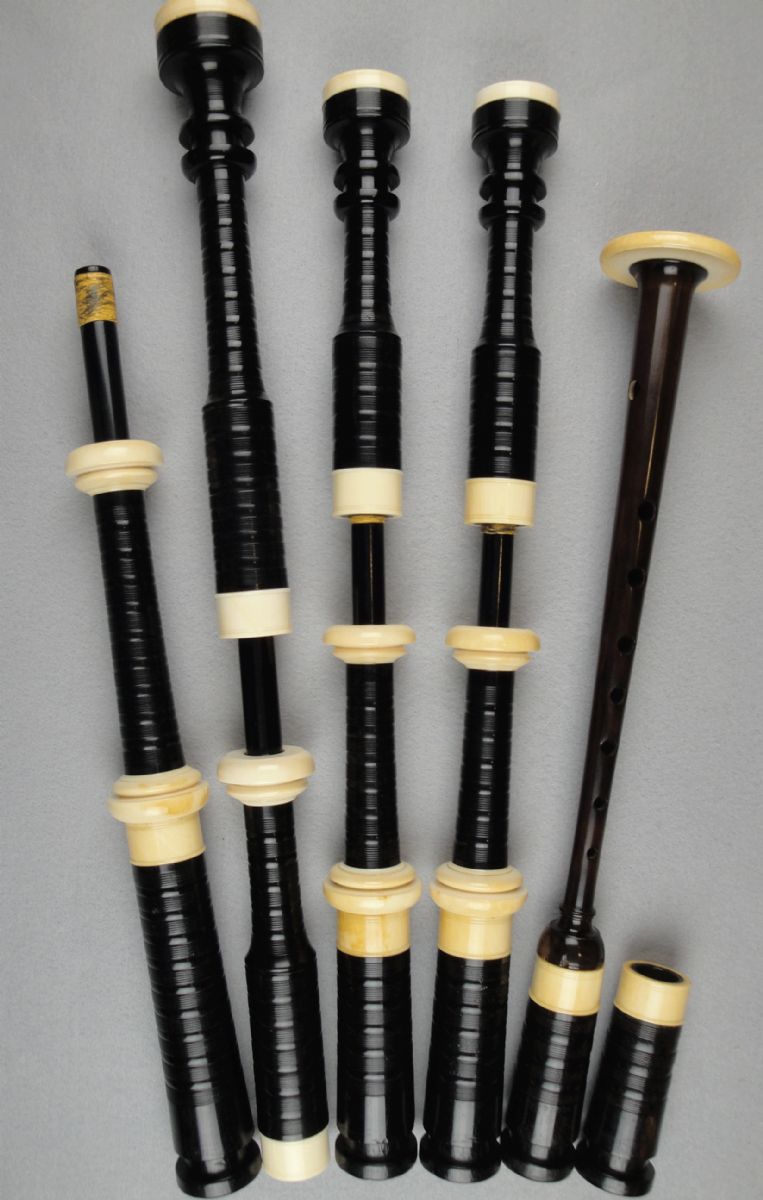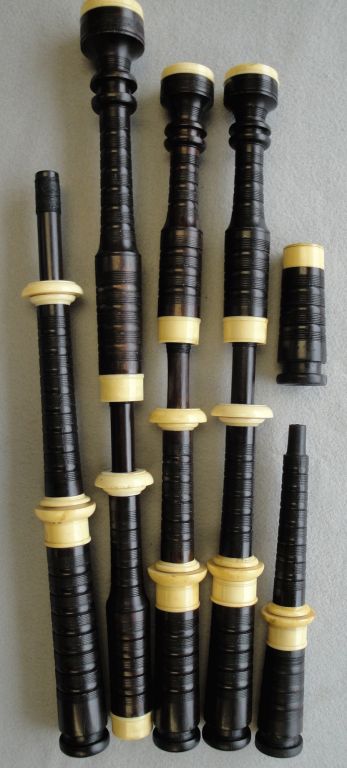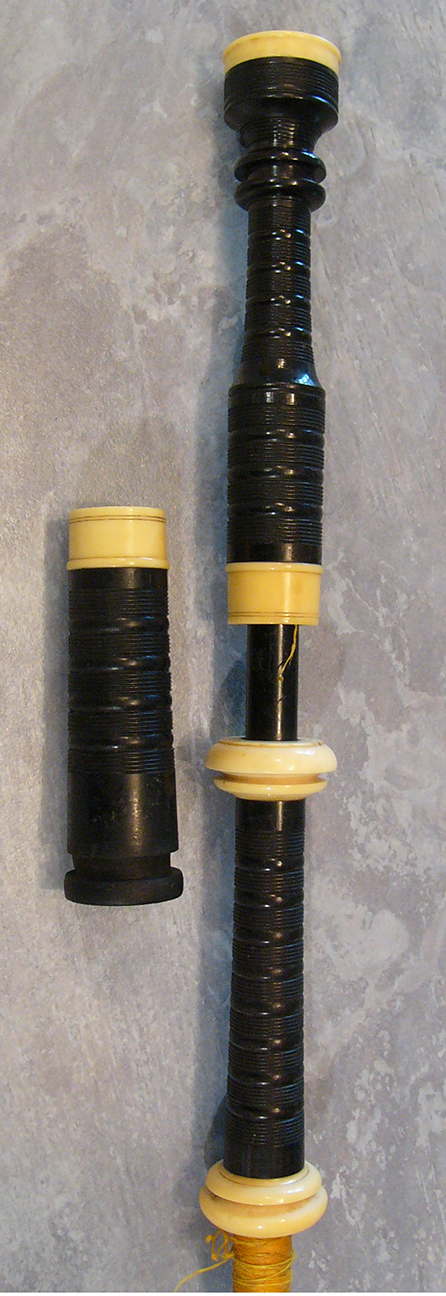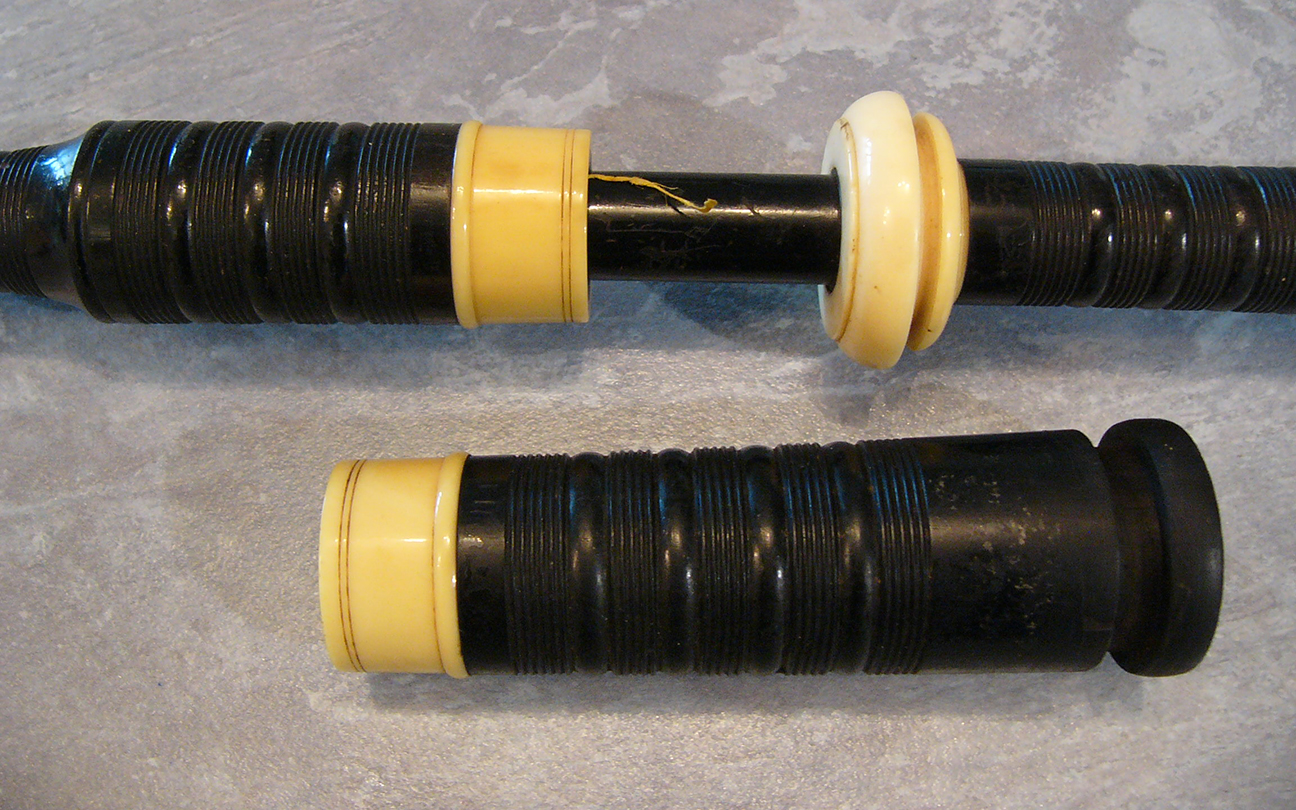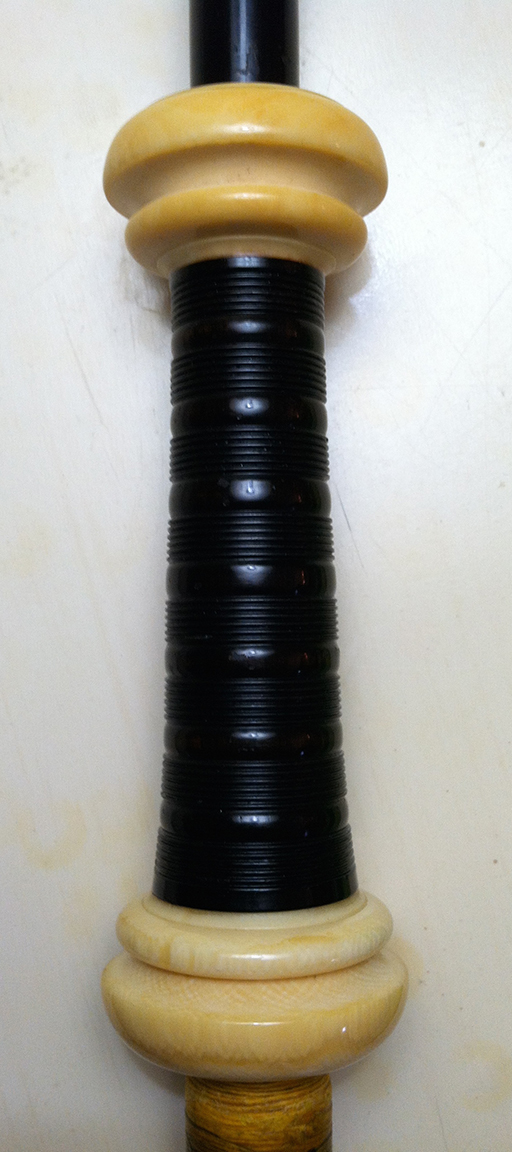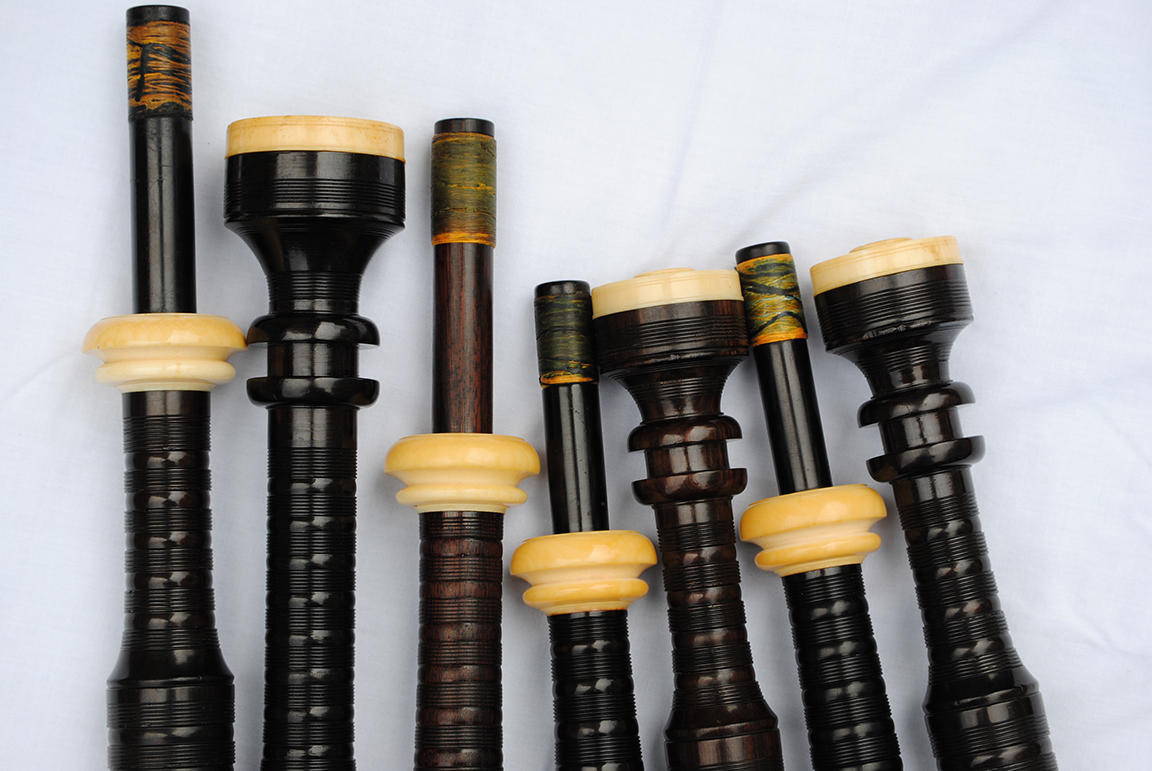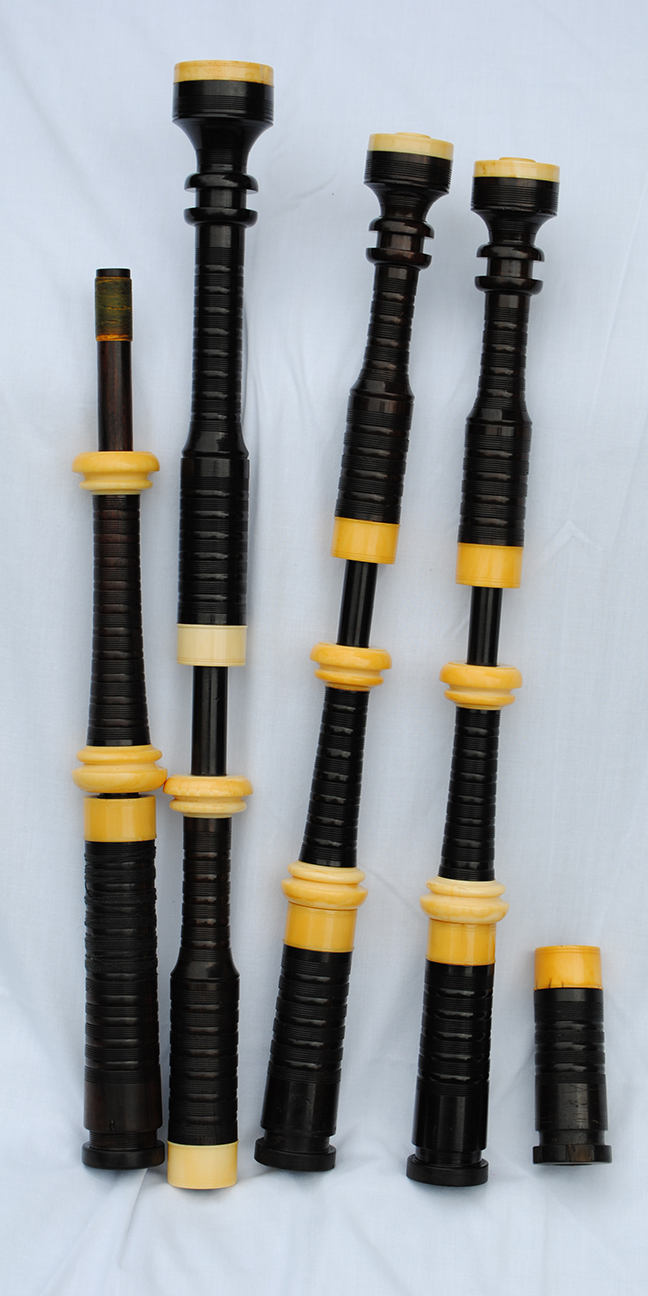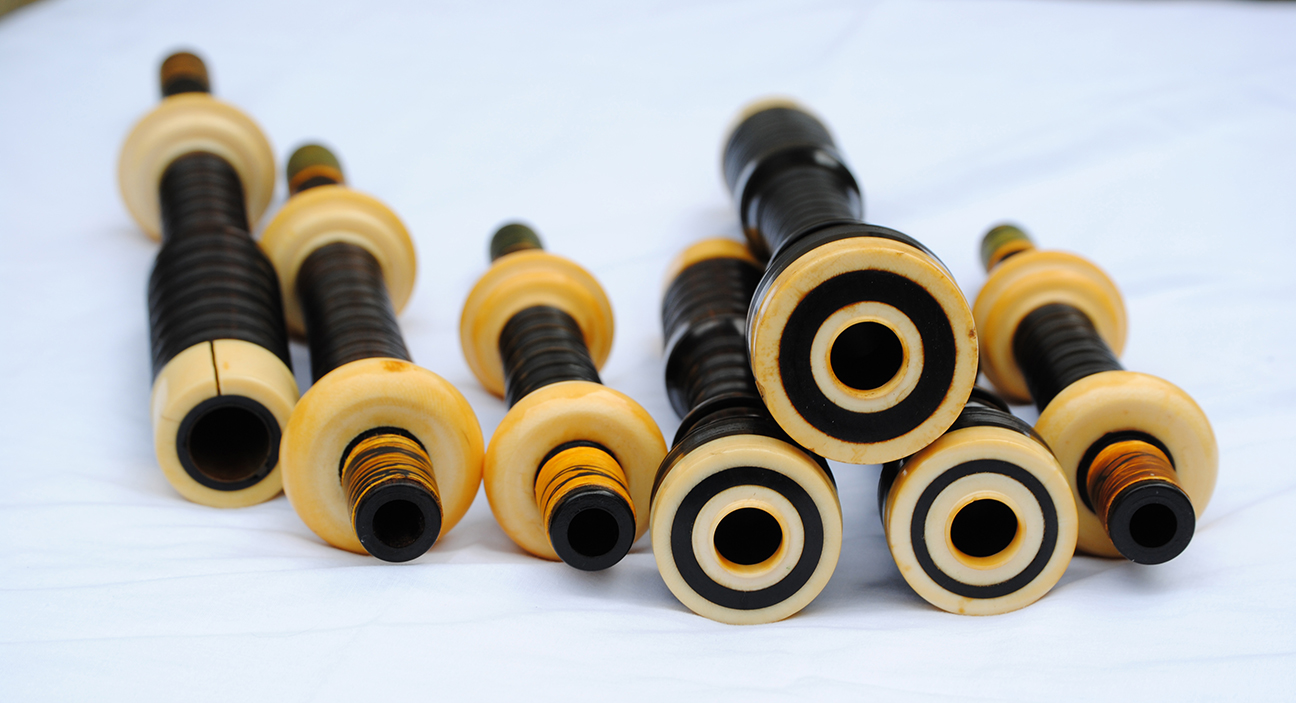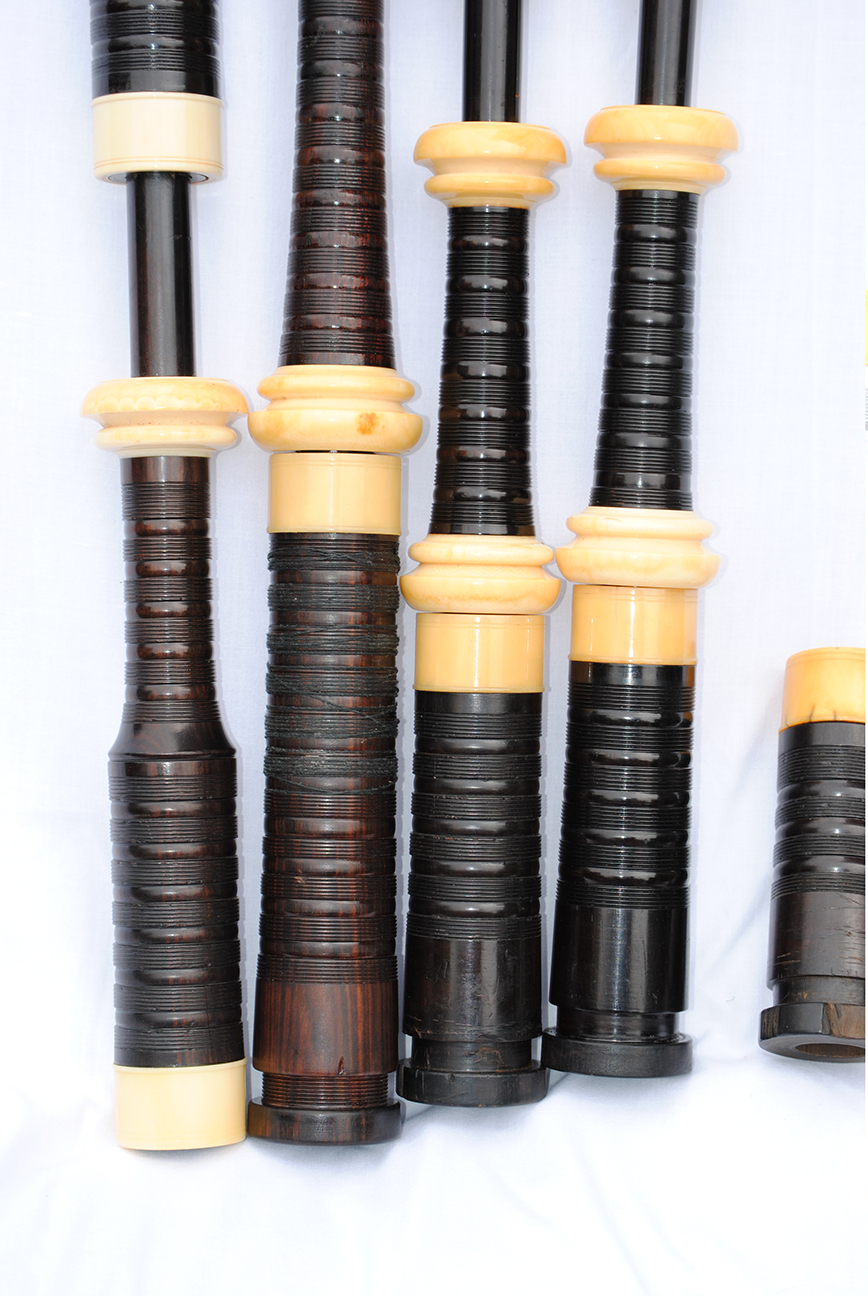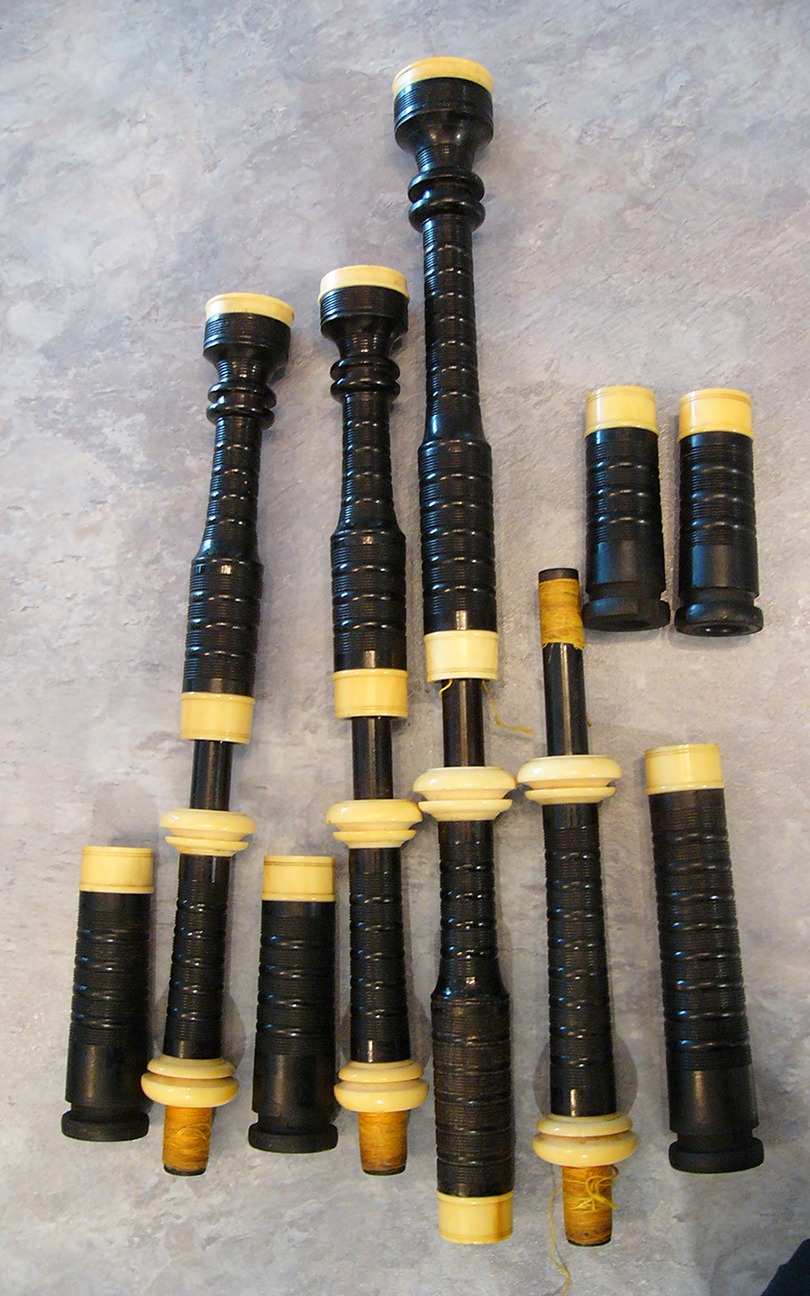Henry Starck made exquisite bagpipes. Their motto was "Only the best is good enough" and this is reflected in the quality of Starck bagpipes. The attention to detail was simply exceptional.
Starck, a flute maker, was persuaded to make bagpipes by William Ross, when he was piper to Queen Victoria in the 1880's. Initially, Starck refused, however eventually agreed to work with Ross. He became one of the most prolific and innovative makers in the industry. When Ross died in 1891, Starck continued the business and was followed by his son Albert Henry (1874-1955) and grandson Henry Albert (1909-1989) who joined the firm at the age of 14.
Henry Albert was determined to preserve the family's reputation. In the absence of a son to carry on the family tradition, he closed down the business when he retired. In a newspaper article in the 1950s Henry Albert admitted that the memory of his grandfather throwing a set of finished pipes on the fire because they did not meet his standard was deeply etched in his mind. "Craftsmanship," he was quoted as saying,"is something wrapped up in the individual. It is putting into the work something so as to turn it out as perfect as human hands can make it."
Henry Starck was quoted as having said that Scots had lost the art of craftsmanship, turning the art of making pipes into a factory operation rather than keeping them products of the workshop. In the early 1900s
Henry Starck Sr. was involved with William O'Duane of Dungannon, Ireland, in the development and manufacture of a new type of bagpipe, which was advertised as the Dungannon, the forerunner to the'Brian Boru' pipe. This could be played on the march, had two complete chromatic scales and was described as having been 'revived from the ancient Irish bagpipe' and being 'the most perfect bagpipe made'.
Starck was a genuine talent. His GHB chanter was superior in pitch to the chanter of his era and produced a very true scale. He innovated on many levels. He also made bagpipes for several others who applied their own stamp to the product. He was a dominant producer of highland bagpipes in Scotland and Australia. He supplied Ireland with Irish War Pipes.
Starck, a flute maker, was persuaded to make bagpipes by William Ross, when he was piper to Queen Victoria in the 1880's. Initially, Starck refused, however eventually agreed to work with Ross. He became one of the most prolific and innovative makers in the industry. When Ross died in 1891, Starck continued the business and was followed by his son Albert Henry (1874-1955) and grandson Henry Albert (1909-1989) who joined the firm at the age of 14.
Henry Albert was determined to preserve the family's reputation. In the absence of a son to carry on the family tradition, he closed down the business when he retired. In a newspaper article in the 1950s Henry Albert admitted that the memory of his grandfather throwing a set of finished pipes on the fire because they did not meet his standard was deeply etched in his mind. "Craftsmanship," he was quoted as saying,"is something wrapped up in the individual. It is putting into the work something so as to turn it out as perfect as human hands can make it."
Henry Starck was quoted as having said that Scots had lost the art of craftsmanship, turning the art of making pipes into a factory operation rather than keeping them products of the workshop. In the early 1900s
Henry Starck Sr. was involved with William O'Duane of Dungannon, Ireland, in the development and manufacture of a new type of bagpipe, which was advertised as the Dungannon, the forerunner to the'Brian Boru' pipe. This could be played on the march, had two complete chromatic scales and was described as having been 'revived from the ancient Irish bagpipe' and being 'the most perfect bagpipe made'.
Starck was a genuine talent. His GHB chanter was superior in pitch to the chanter of his era and produced a very true scale. He innovated on many levels. He also made bagpipes for several others who applied their own stamp to the product. He was a dominant producer of highland bagpipes in Scotland and Australia. He supplied Ireland with Irish War Pipes.
The earliest Henry Starck bagpipes had very distinctive projecting mounts. Interestingly, Some bagpipe stamped "W. Ross" have similar mounts. Perhaps Starck was testing the relationship before attaching his name to the product.
As with many makers certain changes took place over the years. Mounts took on a different profile and then changed yet again. The beading and combing became very distinctive. Starck's signature beading was cut deep and very round. Stocks became quite flared. The wood between the rings and bushing remained quite generous.
Following the death of William Ross, Starck made bagpipes in a wide range of styles:
1. Button Mount
2. Chalice Top
3. Brian Boru
4. Irish War Pipe
5. Catalin
Following the death of William Ross, Starck made bagpipes in a wide range of styles:
1. Button Mount
2. Chalice Top
3. Brian Boru
4. Irish War Pipe
5. Catalin
Henry Starck
